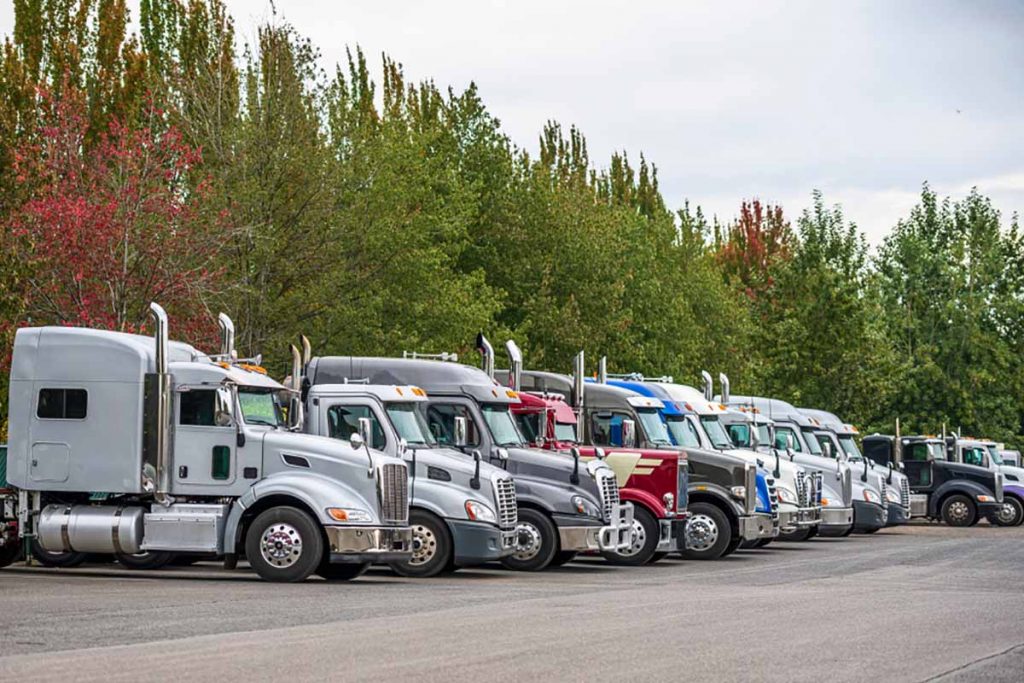
With fewer available drivers comes less available trucking supply, leading to higher prices and potential disruptions in trucking availability for those in the recycling industry. | Vitpho/Shutterstock
A driver shortage that was exacerbated by the COVID-19 pandemic will continue to create challenges for moving recyclables this year, analysts say.
Freight market research firm FTR Intel recently shared insights covering the trucking market during the pandemic and how some of the challenges of the past year will be around for months to come.
Trucking activity dropped dramatically in March 2020, when COVID-19 restrictions and associated impacts began to spread across the U.S. Overall freight volume is still down compared with pre-pandemic levels, and FTR doesn’t anticipate the freight activity will recover fully until mid-2021. That’s largely because of wider economic impacts from the pandemic on a number of business sectors.
But one figure has surged above pre-pandemic levels, and it’s an important one for recycling firms seeking transportation to move recyclables. Active truck utilization, which is the share of trucks engaged in hauling freight, is “far above” February 2020 levels, said Avery Vise, vice president of trucking for FTR.
“While freight demand has not fully recovered, driver capacity is much tighter than it was,” he said, noting that payroll employment in the trucking industry is down 3% from February 2020.
‘Extraordinary pressures’
With fewer available drivers comes less available trucking supply, leading to higher prices and potential disruptions in trucking availability for MRFs and other recycling operations.
“We have some extraordinary pressures on the supply of drivers, many of which are related to the pandemic,” Vise added. “One is the sharp reduction in new CDL drivers due to social distancing at schools, and especially on limits in issuing commercial learner’s permits, because the state agencies are stressed.”
Another contributor to the loss of drivers is an overall lower labor participation rate in the U.S. during the pandemic, Vise said. Of the entire population aged 16 or older, labor participation is down 2% compared with before the pandemic.
Furthermore, the trucking industry faces competition with construction, manufacturing and local delivery positions, Vise said.
“We are going to be challenged for months to come” due to all of these factors, Vise said, “and we don’t expect much change in the situation with capacity utilization.”
Moving into 2021, the FTR analysts forecast COVID-19 outbreaks at businesses will continue to disrupt the labor pool and may contribute to driver shortages, at least until vaccines are available to a wider swath of the population.
Additionally, legislation and regulation from the incoming administration of President-elect Joe Biden will likely play into the trucking market this year, particularly given the current political makeup of Congress.
Jonathan Starks, chief intelligence officer for FTR, noted that when there is a slim majority in the U.S. Senate, lawmakers often feel some urgency to act before the next round of elections comes up. That suggests there could be some significant legislative activity in the coming months, as Democrats control the U.S. House of Representatives and took narrow control of the Senate this month.
Regulatory changes can have a significant impact on the trucking market. For example, the electronic logging device (ELD) mandate that required compliance in 2017 created challenges in situations where there is a narrow window to pick up or drop off goods.
“We will probably know within the first half of 2021 what that regulatory agenda or legislative agenda really is going to look like and the pace that they’re looking to move,” Starks said.
More stories about markets
- ‘Operational readiness is high’ as Oregon rolls out EPR
- Pizza box demand declining, report says
- Paper operations close in Georgia, Texas



